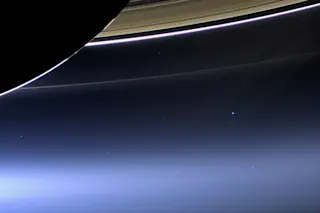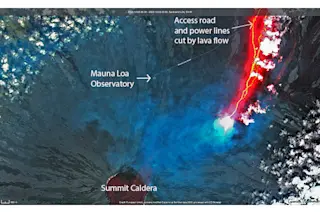In this portrait by the Cassini spacecraft, looking past Saturn toward the inner solar system, Earth is the tiny blue dot at center right. (Image: NASA/JPL-Caltech/Space Science Institute)
7/23/13 | Update below on the origin of the term 'pale blue dot', a stirring quote from Carl Sagan, and an additional image |
Here it is: Cassini's greatly anticipated portrait of the Earth, as seen from the Saturnian system nearly 900 million miles away. It's the pale blue dot in the right center of the image, under Saturn's luminously beautiful and delicate rings. According to NASA, this is only "the second time that Cassini has imaged Earth from within Saturn's shadow, and only the third time ever that our planet has been imaged from the outer solar system." I think this truly is a 'wow' moment. Here is a closeup, showing Earth and the moon together:
The Earth and Moon, as ...














